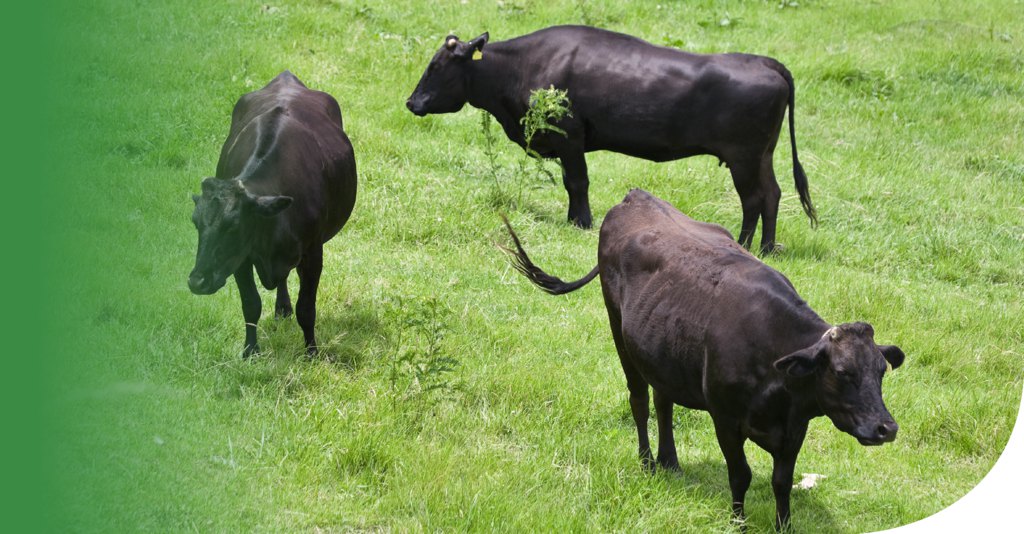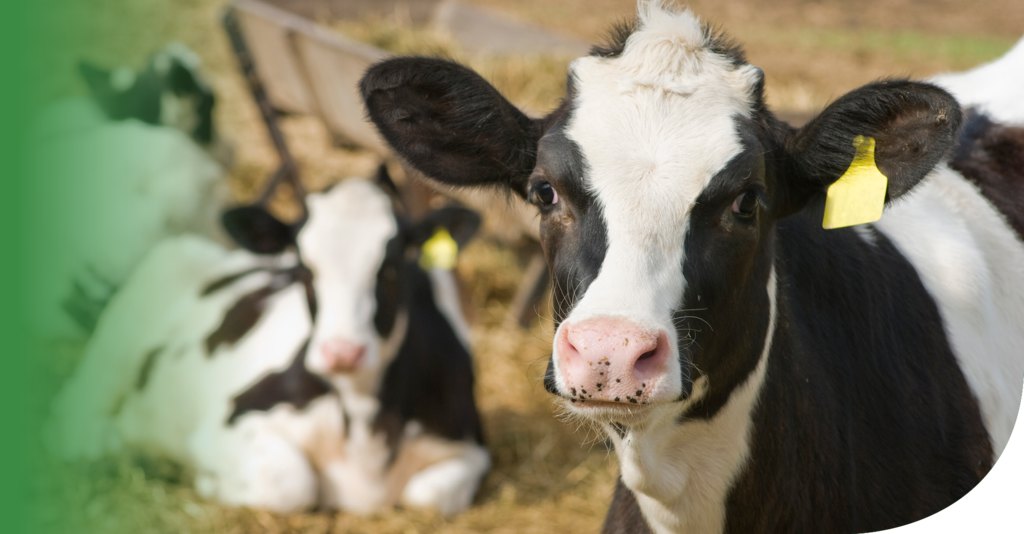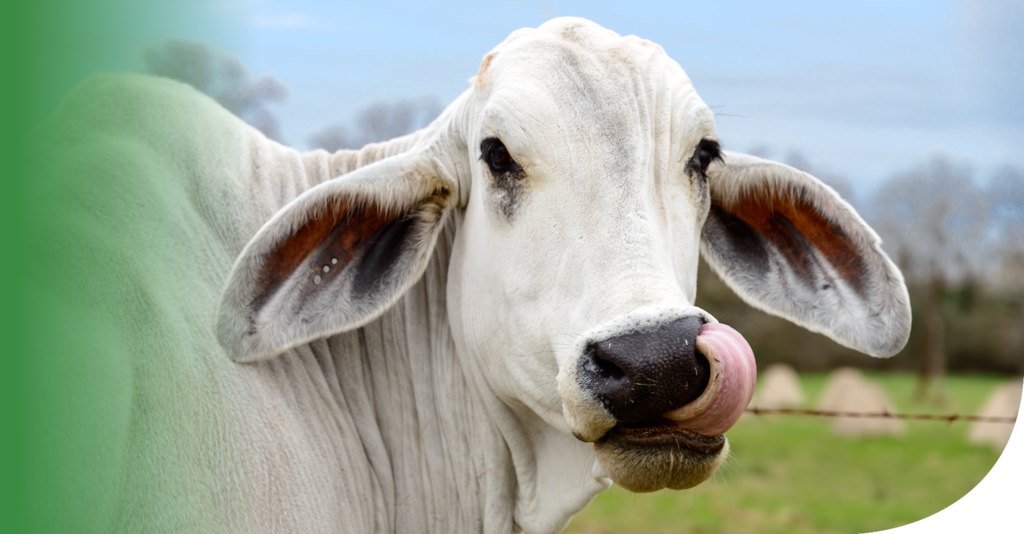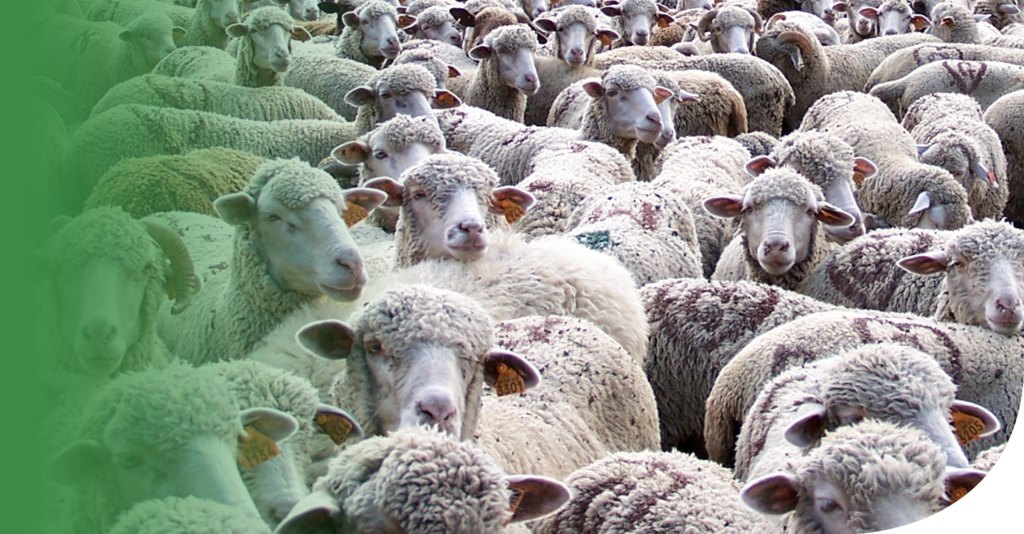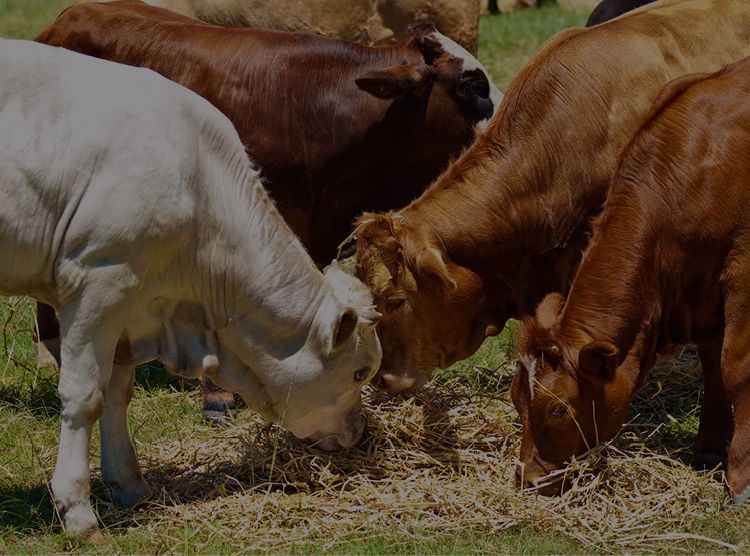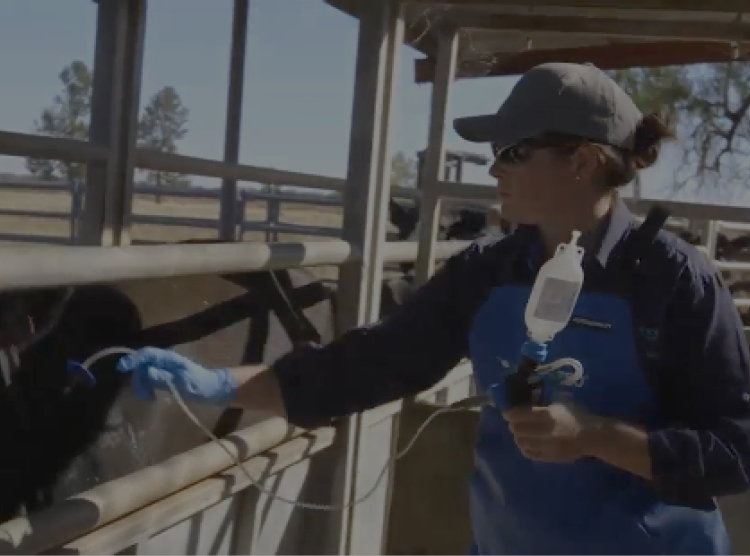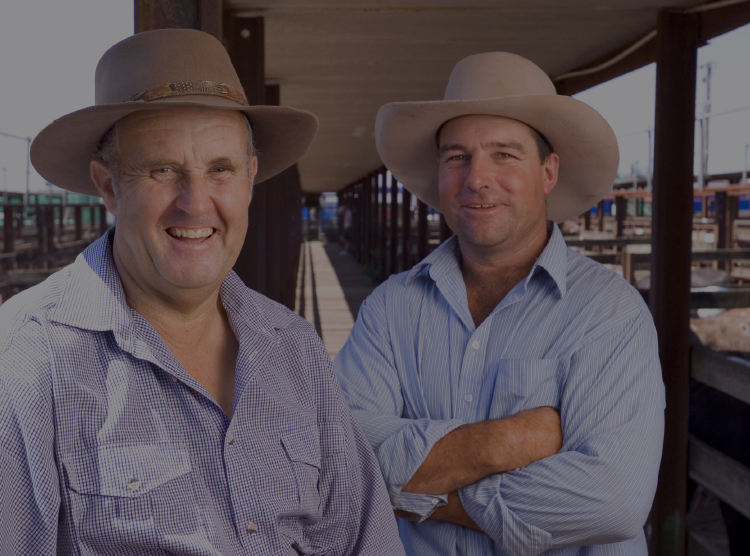Overview
The practice of ET is commonly used in stud cattle herds in Australia. Producers that have identified elite females in their herds often choose to use ET to maximise the genetic potential of these cows to a variety of elite sires. When producers actively utilise ET, a higher percentage of females will exist in the herd from their selected elite donor females. The majority of donor cows flushed each year globally are dairy breeds. However, in Australia, approximately 80% of the donor cows flushed each year are beef, which is possibly due to our proportionally larger beef herd.
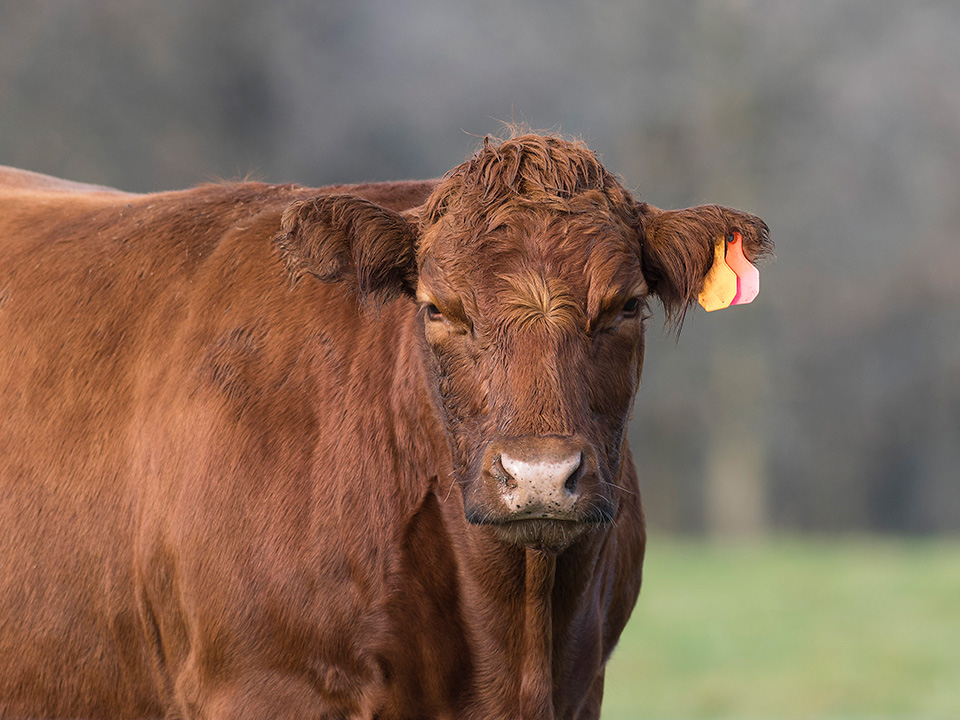
Advantages
ET focuses on maximising the genetic potential of the high performing females in your herd. Although AI is a suitable choice for most herds, it only allows a breeder to maximise the genetic potential of elite sires. ET enables a cow to have many more calves in her lifetime than what is possible via natural mating.
Embryo transfer is also a perfect way to introduce new or unique genetics into your herd. The freezing of cattle embryos that have been produced in vivo (fertilised and matured in the donor female) is well established. Therefore, frozen embryos can be purchased and transferred from farm to farm or around the globe and transferred into recipients yielding acceptable pregnancy rates that are sometimes comparable to fresh transferred embryos. Approximately half of the embryos transferred in Australia have been frozen [3].
How do producers use ET?
Implementing ET programs on farm generally require two groups of females to be treated:
-
Donor females
-
Recipient females
The general process of ET follows the following steps:
-
Donor cows are selected and synchronised using Cue-Mate® and treated to superovulate with Folltropin-V®.
-
Donor cows are inseminated with the sire of choice.
-
At a similar time recipient cows are synchronised using Cue-Mate® and eCG.
-
Approximately 7 days (time varies) after the donor cow ovulates, the veterinarian will flush the embryos from the donor cows and transfer them to recipient cows.
-
If recipient cows are not available, embryos may be stored in liquid nitrogen until they are available.
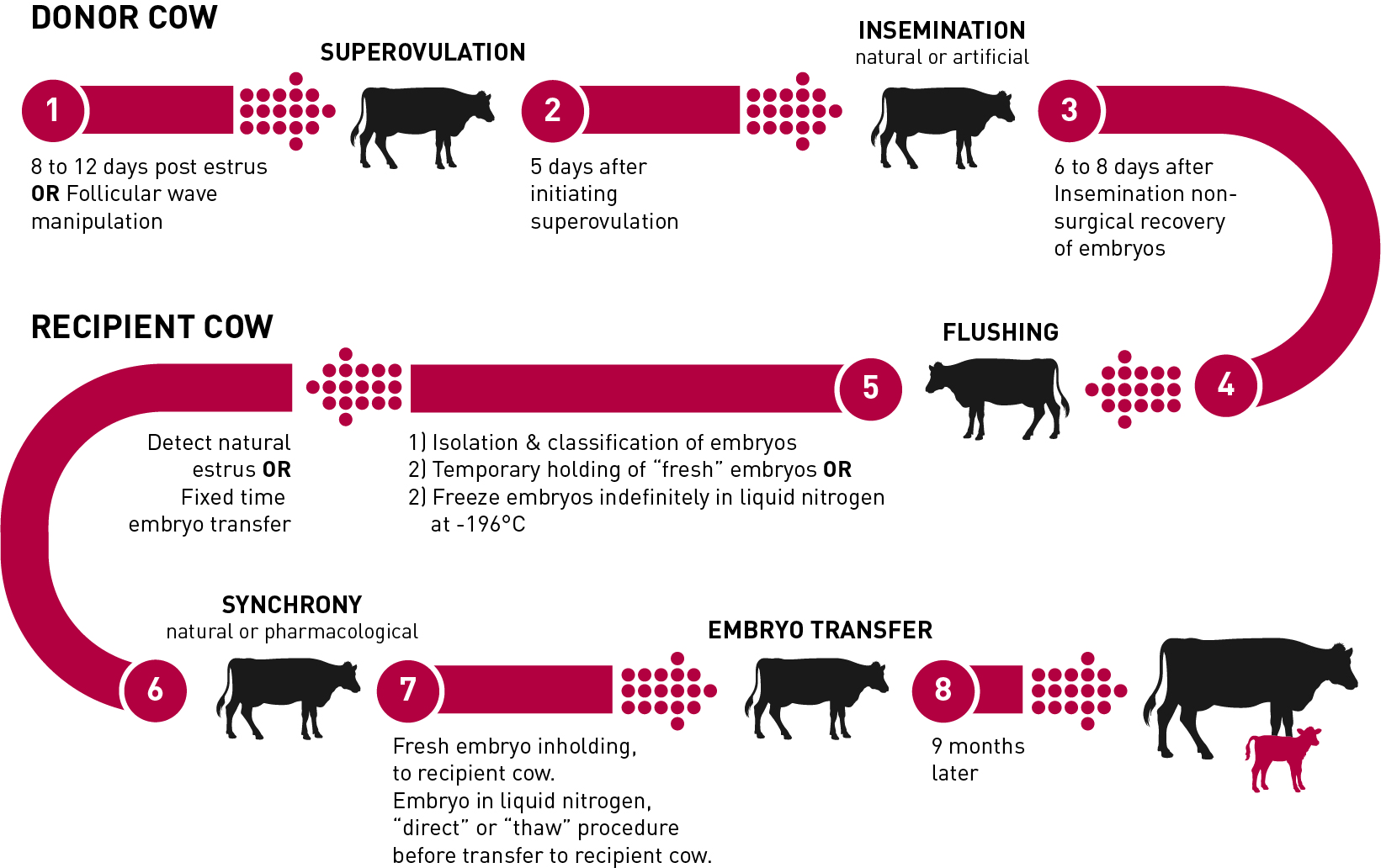
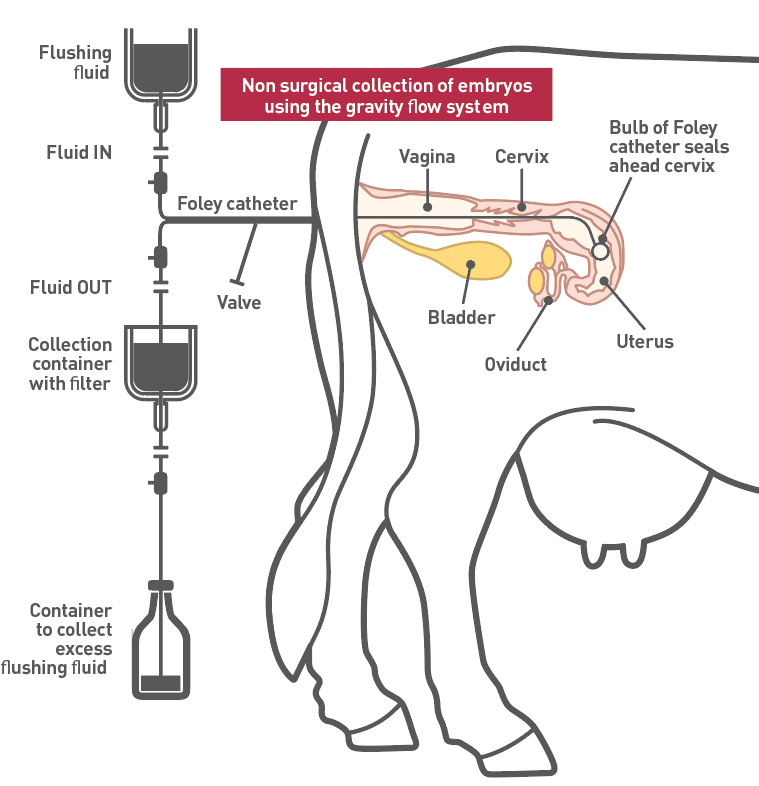
Expected Results
The expected outcome in any reproduction program is determined by a variety of factors. Factors that can contribute to the quantity and quality of embryos retrieved from donor cows and the likelihood that a recipient will become pregnant after embryo transfer could be, and are not limited to:
The results obtained are highly reliant on the quality of the program management. At times pregnancy rates of up to 80% with fresh-transferred embryos can occur. However, on average, it is generally expected that when good quality embryos are transferred a pregnancy rate of approximately 65 to 70% with fresh and 60 to 65% with frozen embryos will result.
The most variable aspect is the amount of transferable embryos that are retrieved from the donor female. When the embryos are flushed they are graded for quality, some may be suitable to transfer and others may not. Breed tends to be the largest factor contributing to this variation.

Products used
